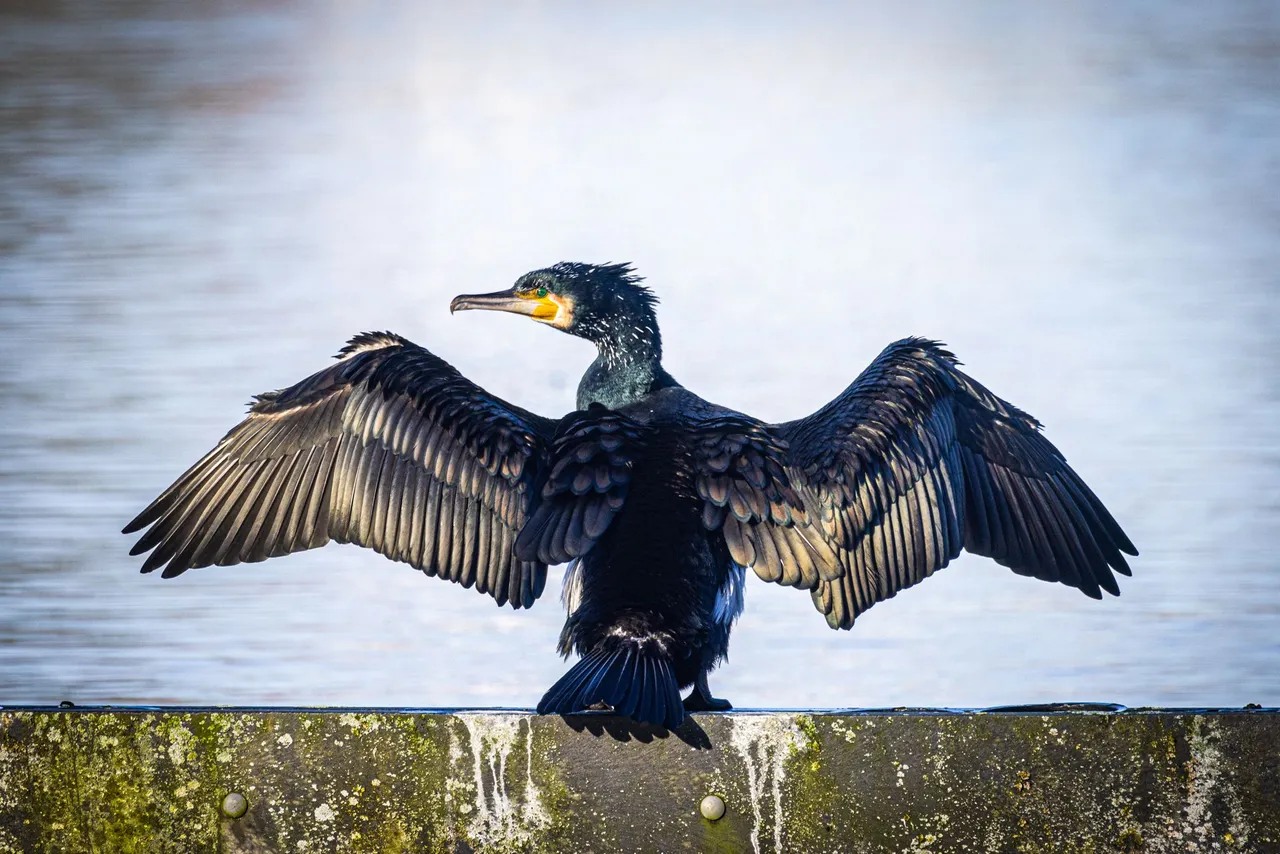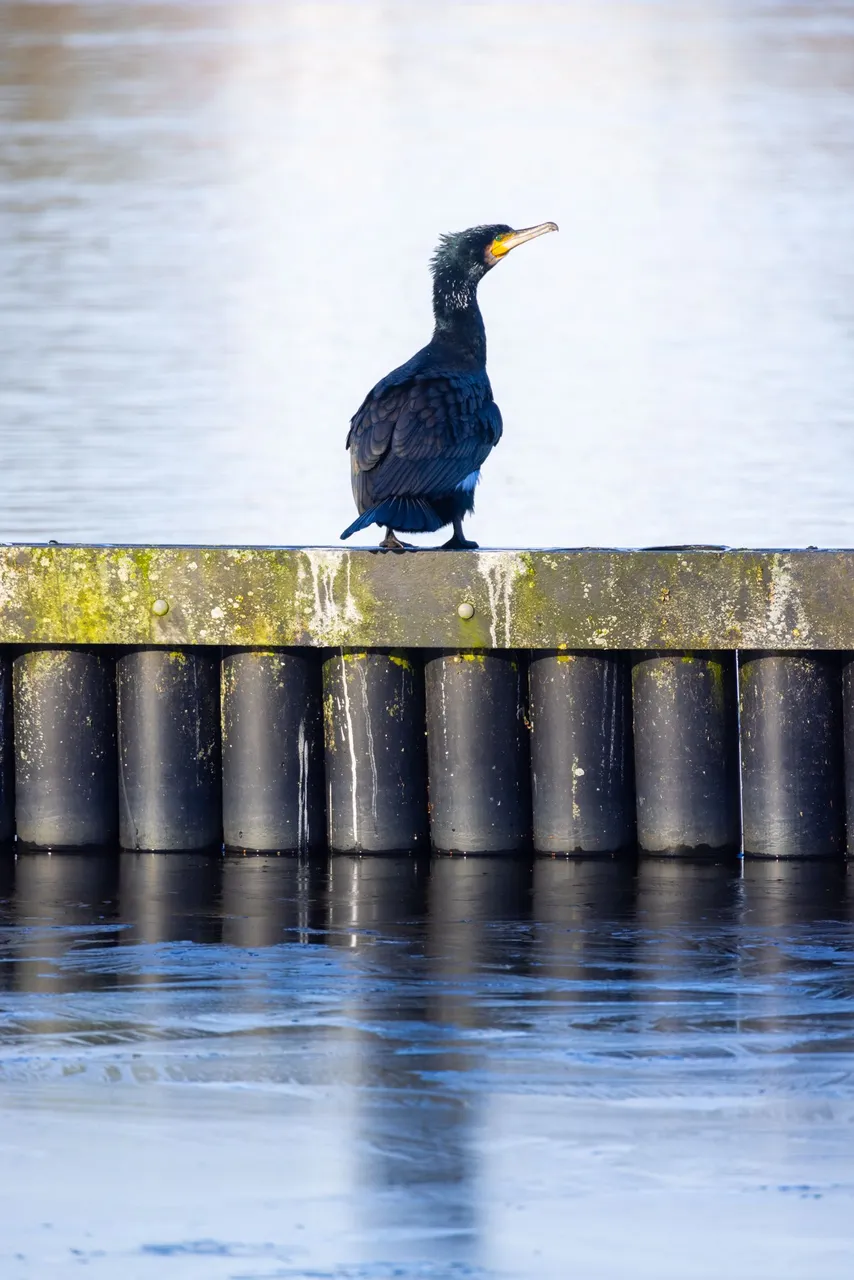The mysterious and enthralling behavior of the great cormorant (Phalacrocorax carbo) became a subject of my keen interest last year. Little did I know that this curiosity would grow into a passionate endeavor, merging my love for ornithology and photography in a fascinating and rewarding journey.
My intrigue was piqued when I first spotted a solitary great cormorant, its sleek black plumage gleaming in the sunlight, perched majestically atop a gnarled branch overhanging the water. I observed its ritualistic preening and the peculiar way it spread its wings to dry after a dive — a sight that left me mesmerized. This initial encounter sparked a yearning to learn more about these enigmatic birds and capture their essence through my lens.
Fast forward to this year, and the scene has remarkably transformed. Where there was once a single cormorant, now there are many, gracing the skies and waters with their presence. This increase in numbers has only fueled my enthusiasm. With my trusty Canon R5 and the RF800 f11 lens in hand, I set out on my walks, often at dawn or dusk, to photograph these birds and their behaviors.

My dedication to these walks is not merely a hobby; it has become a personal mission. The great cormorant, with its impressive wingspan and dark, almost prehistoric appearance, presents a striking subject against the natural backdrops of our local waterways. I’ve captured images of them diving into the water with precision, resurfacing with a catch, and engaging in social displays that are as perplexing as they are beautiful.
One particular behavior that continues to fascinate me is their communal roosting. Often seen in large groups, these birds will select a favorite spot, usually a secluded island or a protected stretch of shore, and gather in numbers. It’s a social gathering that also serves a practical purpose, providing safety in numbers from predators.

Photographing these communal roosts has been a challenge and a delight. The RF800 f11 lens, while fixed in aperture, is a marvel of engineering, providing the reach needed to capture detailed shots from a respectful distance. Its lightweight design, coupled with the R5’s impeccable focus tracking, ensures I never miss a moment, from the subtle interplay of dominance and submission within the group to the serene scenes of preening and rest.

My photography has documented more than just static moments; it has captured the dynamic life of the great cormorant. One image that remains etched in my mind is of a cormorant in full display, wings outstretched, atop a water-bound structure, basking in the golden light of the setting sun. It was as if the bird was performing just for my camera, and the resulting photograph is one of my most treasured.

This year’s increase in the cormorant population has also allowed me to witness their interactions with other wildlife. The way they establish their presence, sometimes to the chagrin of local ducks and geese, adds another layer of complexity to their behavior.
The great cormorant’s adaptation to both freshwater and marine environments has been another focus of my photographic journey. I have images of them in serene lakes, busy riverbanks, and even brackish estuaries, showcasing their versatility and resilience as a species.

This pursuit has not only deepened my appreciation for these birds but also enhanced my skills as a photographer. Understanding the cormorants’ behavior has improved my ability to anticipate their actions, allowing me to capture compelling images that tell a story.

As the seasons change and the cormorants continue their cycle of life, I remain a devoted observer, chronicling their existence through my camera. With every shutter click, I not only record a moment in time but also celebrate the wild beauty of these incredible birds that have become a central part of my life. Through my lens, I strive to convey the awe they inspire in me to others, hoping to instill a greater appreciation for our feathered co-inhabitants of this Earth.
Shot with Canon EOS R5 and RF800 f11 lens (Check BBPhoto for the gear I’m using!).
All photos are taken by me. If you want to know more, head to beheydt.be/photography or shor.by/BjB for more info.
Feel free to follow me on Instagram too! instagram.com/bjornbeheydt


